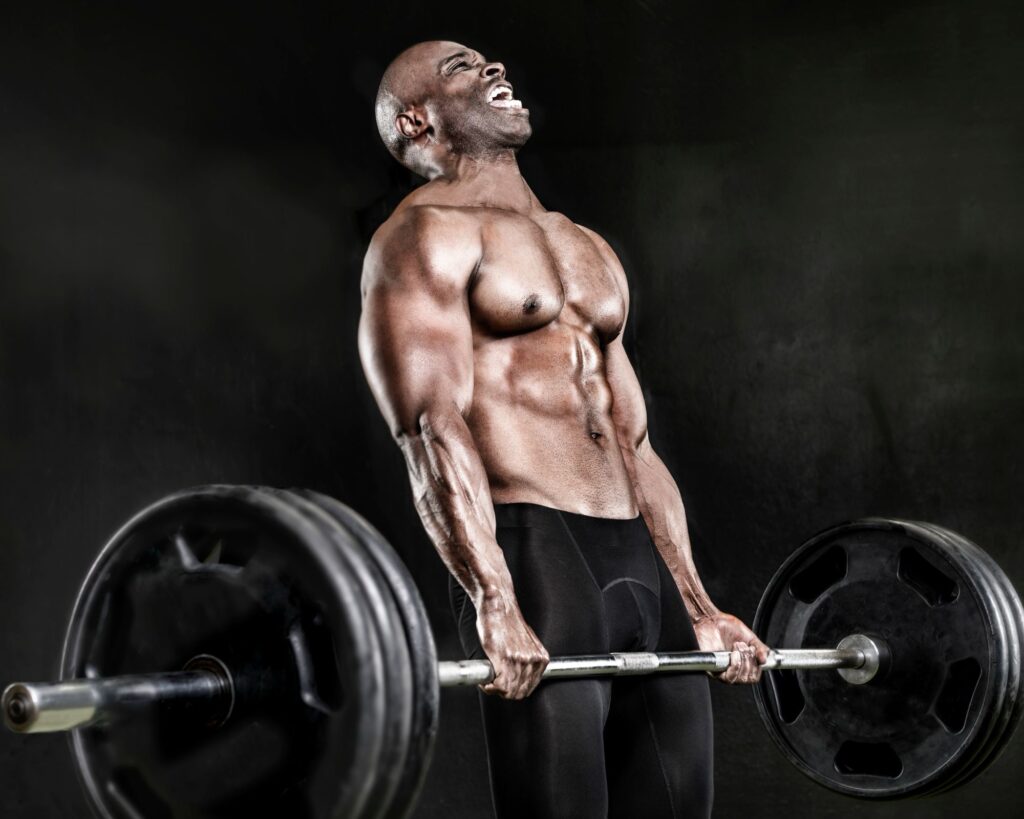The realm of fitness is perennially clouded with debates and myths, especially when it comes to the effectiveness of lifting light versus heavy weights. This discourse has long intrigued both beginners and seasoned fitness enthusiasts alike, prompting the question: Can lifting lighter weights be just as effective as hoisting their heavier counterparts? “The Great Weight Debate: Is Lifting Light Just as Mighty as Lifting Heavy?” aims to dissect this query, shedding light on the nuances of weight lifting practices and their outcomes.
At the heart of this exploration is the understanding that the approach to weight lifting should align with one’s personal fitness goals—whether that’s muscle gain, strength, endurance, or overall health. Interestingly, emerging research and anecdotal evidence suggest that both light and heavy lifting can yield impressive results, but the path and outcomes might differ significantly. As we navigate through this guide, we’ll delve into what defines light and heavy lifting, the physiological impacts of each, and how to tailor your regimen to meet your specific fitness aspirations.

For those embarking on this journey, the quest for the right fitness tools is paramount. Whether opting for lighter weights to tone and sculpt or heavier sets for building strength and muscle mass, selecting the right equipment can make all the difference. The versatility of Adjustable Weights Dumbbells Sets offers a tailored approach to weight training at home, accommodating a range of weights to suit your evolving fitness level. Meanwhile, for those seeking a user-friendly, grip-friendly option, Amazon Basics Easy Grip Workout Dumbbells, with their neoprene coating and various weight options, provide an excellent starting point for light lifting endeavors.
As we dive into the intricacies of light and heavy weight lifting, remember that your fitness journey is uniquely yours. The aim is not to prescribe a one-size-fits-all approach but to equip you with the knowledge and tools to make informed decisions that resonate with your body and goals. Let’s embark on this enlightening exploration together, unraveling the myths and discovering the most effective paths to achieving your fitness aspirations.

What Defines Light and Heavy Lifting?
In the world of weight training, “light” and “heavy” are terms that often cause confusion, largely because they’re relative to the individual’s strength and fitness level. Understanding these concepts is crucial for tailoring a workout regime that aligns with your goals, whether you’re aiming to build endurance, muscle tone, or raw strength.
Light Lifting: A Closer Look
Light lifting typically involves using weights that allow you to perform a higher number of repetitions—usually 12 to 15 or more per set. This approach is often associated with enhancing muscular endurance and toning rather than significantly increasing muscle mass. Light weights are particularly beneficial for beginners, those in rehabilitation, or individuals focusing on maintaining fitness without straining their bodies. The key is consistency and progressively challenging the muscles within this higher repetition range.
For those exploring home workouts to start their light lifting journey, discovering the right routines can significantly impact your progress. The “Ultimate Guide to Home Workouts” offers insights into maximizing your fitness goals with minimal equipment, ensuring you stay on track, regardless of your gym access.

Heavy Lifting Demystified
Conversely, heavy lifting is characterized by using weights that are challenging enough to limit you to fewer repetitions—typically between 1 to 6 per set. This form of training is aimed at increasing muscle strength and size, known as hypertrophy, and requires pushing the muscles to their limits with significant resistance. Heavy lifting is not exclusively for the experienced, but it does demand a solid understanding of proper form and technique to avoid injury.
For enthusiasts looking to enhance their heavy lifting routine, incorporating the right supplements can be a game-changer. Leveraging the “Best Pre-Workout for Weight Loss” can not only fuel your sessions but also optimize fat burning during your workouts, marrying the benefits of heavy lifting with weight management.

Tailoring Your Approach
Determining whether light or heavy lifting suits your needs best depends on your personal fitness goals, experience, and physical condition. It’s also not a binary choice; many athletes and fitness enthusiasts incorporate both methods into their routines to achieve a well-rounded physique and performance.
Choosing the right equipment can profoundly impact your lifting experience, whether you’re leaning towards light or heavy weights. For those curating their home gym, Adjustable Weights Dumbbells Sets offer versatility and adaptability, allowing you to modify the load as you progress. Meanwhile, for targeted light lifting, Amazon Basics Easy Grip Workout Dumbbells provide a range of weights to suit different strength levels and exercises, making them an excellent addition to any fitness regimen.
Have you tried the 20 Day Calisthenics workout at home? It is amazing!
As we delve deeper into the nuances of light vs. heavy lifting, remember that the most effective workout is one that is consistent, enjoyable, and aligned with your personal health and fitness objectives.

Why Do We Lift? Understanding the Goals of Weight Training
Embarking on a weight training journey is often motivated by a variety of goals, from building muscle mass and increasing strength to enhancing endurance and achieving a toned physique. Recognizing your primary objectives is essential in deciding whether to integrate light or heavy lifting into your fitness regimen. Let’s explore how these different approaches cater to diverse training goals.
Building Muscle and Strength
For those focused on gaining muscle mass and enhancing strength, heavy lifting is often the go-to strategy. Pushing your muscles to lift weights close to their maximum capacity for fewer repetitions encourages muscle hypertrophy, the process through which muscle fibers grow. This method is particularly effective for those looking to see significant gains in muscle size and strength over time.
Adding equipment like adjustable dumbbells or push-up handles can further diversify your heavy lifting routine, allowing you to target different muscle groups effectively from the comfort of your home. For example, incorporating foldable push-up handles into your regimen can amplify the intensity of your push-ups, engaging your chest, shoulders, and triceps more deeply than standard weights.

Can You Achieve Muscle Growth with Light Weights?
The notion that only heavy lifting can lead to muscle growth is a widespread misconception. Recent studies have shown that lifting light weights can also be incredibly effective, provided the muscles are worked to the point of fatigue. This means performing more repetitions until you can’t do any more due to muscle exhaustion.
The Science Behind Light Weights for Muscle Growth
When you lift light weights for a higher number of repetitions, you’re engaging in a type of training known as endurance training. This approach primarily increases muscle endurance but can also contribute to muscle hypertrophy (growth) by pushing the muscles through prolonged periods of strain, leading to muscle fiber adaptations. The key to muscle growth with light weights is reaching muscle fatigue with each set, which signals your body to start the repair and growth process.
For those looking to enhance their home workouts with light weights, incorporating a variety of exercises that target different muscle groups is crucial. Utilizing resources like the “Ultimate Guide to Home Workouts” can provide you with structured routines that maximize the effectiveness of your light weight lifting sessions.
Practical Tips for Light Weight Lifting
- Focus on Form: With lighter weights, it’s easier to maintain proper form, reducing the risk of injury and ensuring that the targeted muscles are effectively engaged.
- Increase Repetitions Gradually: To achieve muscle fatigue without heavy weights, increase the number of repetitions gradually over time.
- Incorporate a Variety of Exercises: Ensure your workout routine targets all major muscle groups, using a mix of equipment like dumbbells and foldable push-up handles to diversify your exercises.
Does Heavy Lifting Guarantee Greater Strength?
Heavy lifting is traditionally associated with greater gains in muscle strength and size. By lifting weights that are close to your maximum lift capacity for fewer repetitions, you create significant stress on the muscles, leading to more pronounced muscle hypertrophy over time compared to lighter weights.
The Benefits of Heavy Lifting
- Maximized Muscle Growth: Heavy lifting is more efficient for increasing muscle size due to the higher levels of muscle fiber recruitment.
- Increased Strength: Lifting heavy enhances your muscles’ ability to lift more over time, contributing to overall strength improvements.
- Efficiency: For those with limited time, heavy lifting can offer quicker results in strength and size when compared to the higher-rep light weight lifting.
To safely embark on a heavy lifting routine, especially at home, having the right equipment is crucial. Options like adjustable weights dumbbells sets offer versatility, allowing you to gradually increase the weight as your strength improves. Moreover, ensuring your workout space accommodates heavy lifting safely, with minimal risk of injury, is essential.

How to Lift Light: Techniques and Tips
Light weight lifting is not merely about choosing the lighter dumbbells. It’s a strategic approach that focuses on endurance, toning, and meticulous form. Through my own journey, I discovered that success in light lifting hinges on attention to detail and a commitment to pushing through to muscle fatigue.
Embrace the Burn with High Repetitions
In my experience, the magic of light lifting began to reveal itself when I pushed beyond my comfort zone, aiming for high repetitions that left my muscles burning. It’s this burn, this feeling of muscle fatigue, that signals you’re on the right path. Utilizing lighter weights, like the Amazon Basics Easy Grip Workout Dumbbells, I found that focusing on slow, controlled movements maximized muscle engagement and endurance growth.
Consistency is Key
One of the most crucial lessons learned was the importance of consistency. Light lifting demands a regular, disciplined approach. Skipping sessions or not fully committing to reaching muscle fatigue can significantly delay or diminish results. Setting a regular schedule and sticking to it has been instrumental in achieving progress.
Technique Over Everything
Perfecting my form became significantly easier with lighter weights, allowing for a greater focus on technique. This not only minimizes the risk of injury but also ensures that the targeted muscles are effectively engaged. Incorporating varied equipment, such as foldable push-up handles, helped introduce diversity into my routine, challenging my muscles in new ways and preventing workout monotony.
Mastering the Art of Heavy Lifting
Transitioning to heavy lifting was a game-changer in my fitness journey, offering a new set of challenges and rewards. Heavy lifting demands respect for one’s limits and an unwavering focus on safety and form.
Start Slow and Build Up
The foundational principle of my heavy lifting routine was to start slow and gradually increase the weight. Rushing into heavy weights without proper preparation can lead to injuries. Using adjustable weights allowed me to precisely control the resistance, adjusting it as my strength improved.
Prioritize Form and Safety
With heavy lifting, the margin for error narrows significantly. Every lift must be executed with impeccable form. This not only ensures the safety of the exercise but also maximizes the efficiency of each session. Investing in quality equipment, like the robust Adjustable Weights Dumbbells Set, provided the reliability and flexibility needed to pursue heavy lifting at home.
Recovery is Part of the Process
I quickly learned that recovery is just as crucial as the lifting itself. Heavy lifting strains the muscles intensely, necessitating adequate rest and recovery to allow for muscle repair and growth. Incorporating rest days and paying attention to my body’s signals for rest were pivotal in my heavy lifting regimen.
Comparing Results: Light vs. Heavy Lifting Outcomes
The debate between light and heavy lifting is not about declaring a definitive winner but understanding how each method aligns with different fitness goals. Light lifting excels in enhancing muscular endurance and achieving a toned physique, making it an excellent choice for those seeking definition without necessarily increasing muscle size. On the other hand, heavy lifting is unmatched in its ability to build muscle mass and significantly increase strength, catering to those aiming for bulk and power.
Light Lifting: A Path to Endurance and Tone
My journey with light lifting underscored its effectiveness in sculpting and defining muscles. Over time, the increased repetitions at lower weights not only improved my muscular endurance but also contributed to a leaner, more defined appearance. This approach proved that muscle growth isn’t solely the domain of heavy weights, especially when the focus is on muscle tone and endurance.
Heavy Lifting: Building Mass and Strength
Transitioning to heavy lifting opened my eyes to the rapid gains in strength and size possible when challenging the muscles with significant resistance. The satisfaction of lifting heavier weights than I thought possible was paralleled by visible increases in muscle mass, showcasing the direct impact of heavy lifting on achieving a more powerful physique.
Finding Your Balance: How to Choose Between Light and Heavy
Deciding whether to focus on light or heavy lifting boils down to your personal fitness goals, current physical condition, and preferences. It’s also crucial to consider how each approach fits into your lifestyle, including the time and resources you can dedicate to your training.
- Align With Your Fitness Goals: Reflect on whether you’re aiming for endurance and tone or muscle mass and strength. Your primary objectives will guide your choice between light and heavy lifting.
- Listen to Your Body: Pay attention to how your body responds to different training intensities. Balancing challenge and safety is key to a sustainable lifting routine.
- Consider Mixing Both Approaches: Many find that a combination of light and heavy lifting provides a balanced approach, catering to a broad spectrum of fitness goals. Don’t hesitate to customize your routine to include both methods for a well-rounded fitness regimen.
Lifting the Veil on Weight Lifting Myths
“The Great Weight Debate: Is Lifting Light Just as Mighty as Lifting Heavy?” aimed to demystify common misconceptions around weight lifting, illuminating the unique benefits and considerations of both light and heavy lifting. Regardless of the path you choose, the essence of weight training lies in consistency, proper technique, and a deep understanding of your personal fitness journey.
Embrace the diversity of weight lifting methods with an open mind and a committed spirit, and remember that the journey to fitness is as much about enjoying the process as it is about achieving results. Whether through the endurance-building repetition of light weights or the strength-enhancing challenge of heavy lifting, your journey is yours to define.
As an Amazon Associate we earn from qualifying purchases through some links in our articles.




